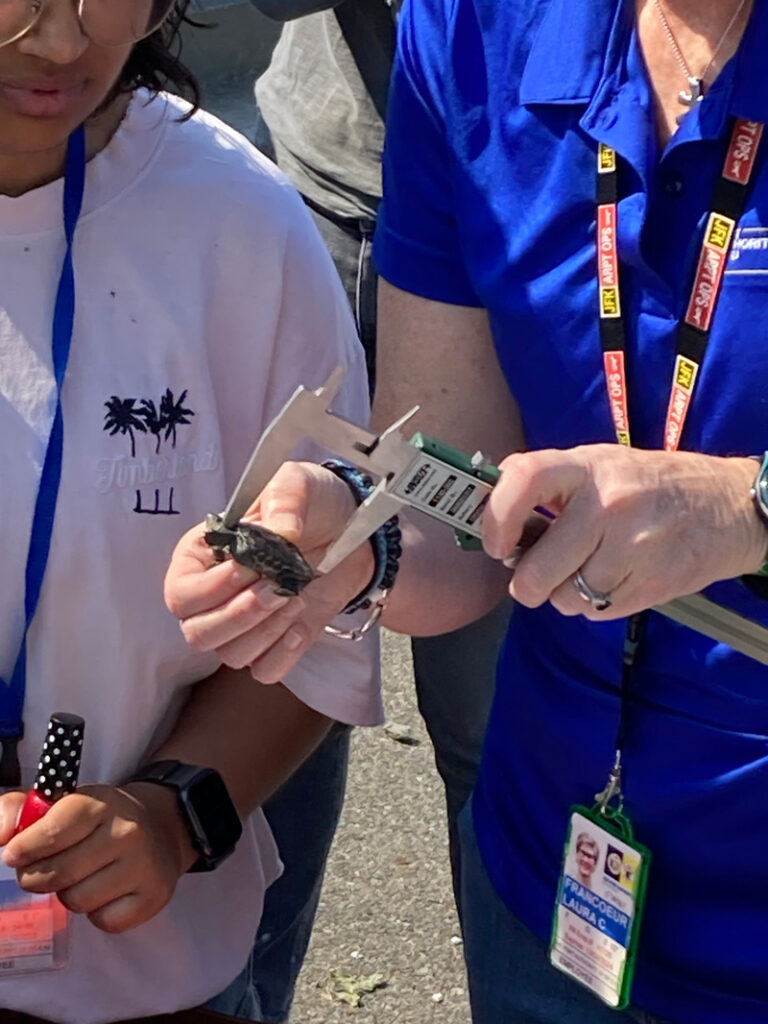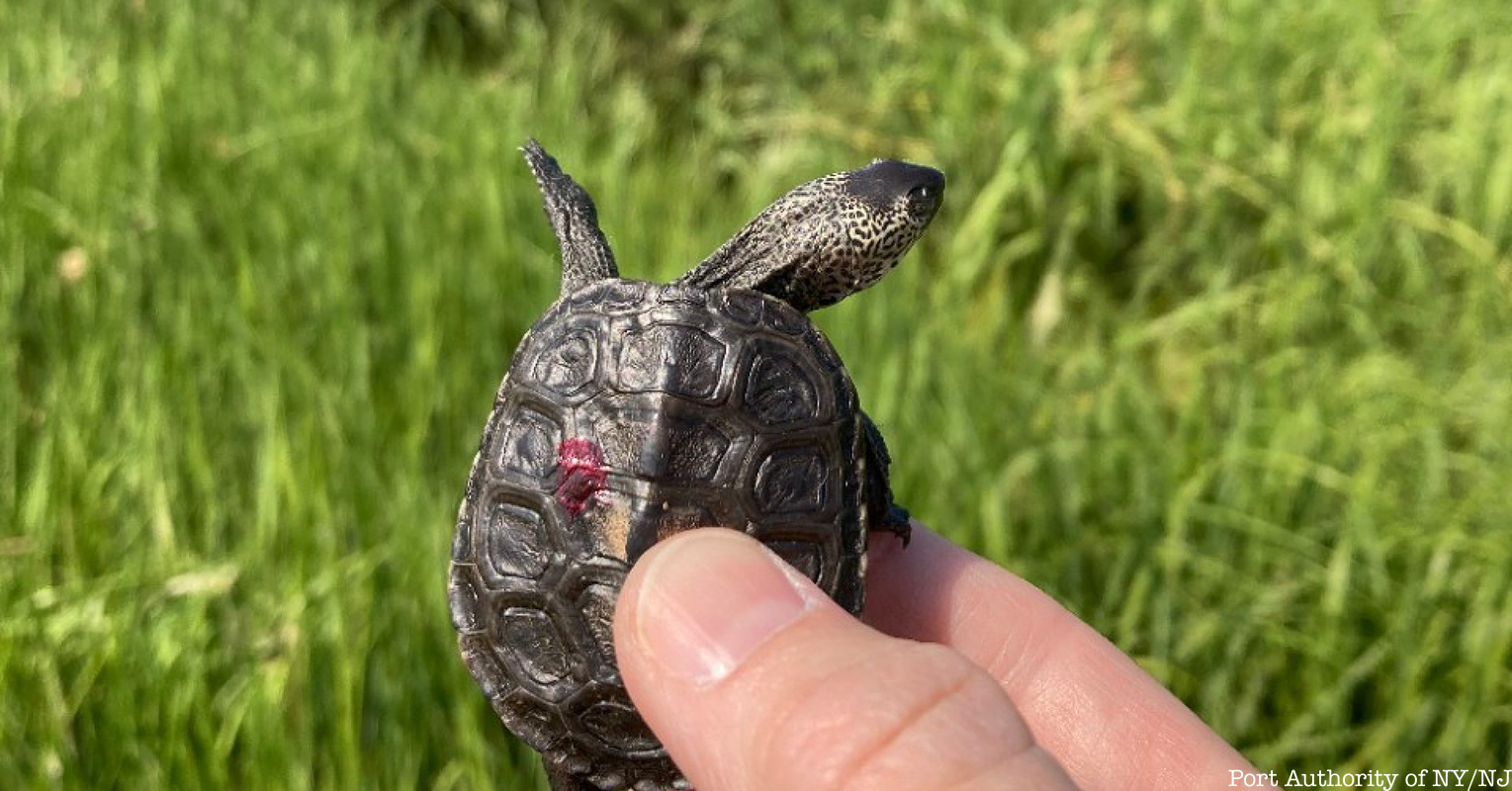Bad weather, air traffic, and delayed crewmembers are all reasons you might expect to cause a plane delay, but turtles on the runway? It happens in NYC! At John F. Kennedy Airport, Diamondback Terrapins have been known to encroach on runway space as they escape the high tides of Jamaica Bay. and nestle into the sand that lines the edge of the airport grounds. That is where, every summer season when JFK is at a higher elevation than the adjacent marsh, the turtle eggs like to lay their eggs. As adorable as it may be to look out the window of your seat and see a baby turtle roaming the take-off site, the surprise visit usually sets back plane departures and puts the new hatchlings in danger. Rest assured, the Port Authority has measures in place to safely rescue the turtles from the runways and starting this summer, will track the turtles’ movements to learn more about where they come from and where they’re going.
The Terrapin team at Port Authority currently collects the mother turtles that visit their eggs, inspects them, and tags them with a small chip before releasing them back into the Bay. This year, wildlife biologists are testing two different types of GPS on eight mother turtles, four of which were captured at JFK while the rest were taken from the Jamaica Bay Wildlife Refuge. The GPS initiative will track their movement over the next few months and finally discover the home of these terrapins. This information will aid scientists in habitat management. The results of the study may also reveal whether separate nesting populations choose different locations to feed and gather, or if they choose to flock to one place. Testing the two GPS devices at once is an effort to efficiently gauge which will be more useful in future tracking.

Despite the hatchlings’ tendency to crash the JFK runways, current preventative devices and the efforts of airport employees almost always catch the turtles before they risk hurting themselves on the grounds. A perimeter made up of big, black 8-inch irrigation tubes that are high enough that the Terrapins can’t climb over is set up along JFK’s fence line. This barrier aids airport workers in preventing turtle deaths by plane and has brought down Terrapin runway crashers by 45 percent in the last year. JFK is devoted to making sure plane passengers have a seamless trip, but not at the expense of the hatchlings. The resilient little turtles that do end up injured during their journey are sent to a rehab facility where they may hatch their eggs in a controlled environment or simply heal from any accident until they’re ready for release back into the Bay.
The experimental GPS initiative will, hopefully, help wildlife biologists gather more expansive information about the turtles, and in doing so, help them anticipate the turtles’ activity for the future. Knowing where they come from and what to expect will ensure the safety of the terrapins and their consistent population growth. And ensure that wildlife on the runway doesn’t cause any further airplane delays!
Next, read about Brooklyn’s Little-Known Kingsland Wildflowers, a Rooftop Oasis for NYC Wildlife






